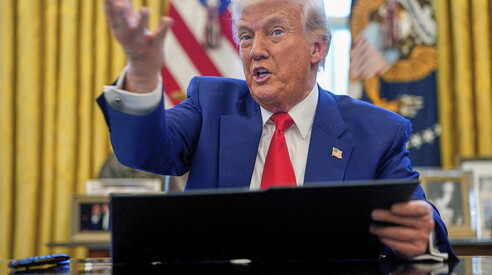
Pier Carlo Padoan (foto LaPresse)
Padoan: “State aid is the best way to rescue Veneto banks”
Italian Economy and Finance minister: “We didn’t violate the rules nor killed the banking union”
More or less a year ago, the Financial Times, describing the Italian banking system with tragic spirit, pointing in particular the example of eight banks threatening to put in crisis the entire Eurozone. One year later, we can say that the problem, perhaps described with excessive alarmism, has been managed through a positive evolution. Four of those banks were regional banks set in resolution by the end of 2015, now absorbed by Ubi and Bper. There was Unicredit too, which has achieved an important capital increase. About Monte dei Paschi, the need for additional capital was considered necessary only in the hypothetical scenario of a serious economic crisis, therefore the Government was authorised to proceed with a capital increase as a preventative measure.
This option, a capital increase as a preventative measure, was not allowed for Veneto Banca and Banca Popolare di Vicenza because the financial condition of these two banks made the outcome of a restructuring plan very uncertain, and their return to profitability dubious. For these reasons, last Friday the European Central Bank said that the two banks had to be considered failing or likely to fail. The European Central Bank left the decision on their fate to the Single Resolution Board (SRB). The Committee found that two of the three conditions to allow a resolution were fulfilled, but not the third: according to the Committee, the two banks did not represent a danger to the financial stability of the Eurozone and therefore had to be liquidated according to Italian procedures.
So let's arrive to last Sunday, when the government has begun liquidating the two banks. But a simple liquidation would triggered a huge crisis for a territory that is pushing Italy into economic recovery: the two banks had 200.000 businesses among their customers. A liquidation would create damages to account holders, depositors and savers who have invested in bonds with those banks. It would probably forced the whole Italian banking system to assume the cost of a mandatory protection of depositors, with consequences on the degree of property and capital for many banks, creating a deep uncertainty among all the savers. For this reason, we have decided that the liquidation should be supported by state aid. That is not forbidden in Europe – contrary to how, often and incorrectly, it is argued – if the aid is given in compliance with precise rules. As we did, considering that the Commission has recognised the viability of public intervention.
State aid has made possible for Banca Intesa to buy a business complex that saves thousands of jobs, guarantees credit continuity for businesses and artisans, and avoid disadvantages to households and savers (amongst the burdens purchased by Banca Intesa there are also ordinary bonds, that will be regularly repaid at the natural deadline). The procedure of the operation will enable the aid to be recovered over the next few years (which amounts to € 5.2 billion, of which € 400 million in terms of guarantees for activities with different levels of risk). To sum up: we did not save two banks that did not stand. We have instead liquidated the banks and saved workers, savers and businesses. We saved the economy of the territory.
Again, as in previous crises, we used the most appropriate legal instruments, facing complex restrictions, with a productive dialogue with the institutions of the Union, and dealing with limited resources. In this case, Banca Intesa, a well-managed and heavily capitalised bank, was an asset for the country.
We violated the rules and killed the banking union? Never, the European authorities say. Rather, once again we note that the banking union is not yet completed by the required deposit insurance scheme. Have we submitted to the will of the Community institutions, without hit our fists on the table? Critics should agree with each other: did we killed the banking union or we are the victimes? Reading the comments it seems that someone would eventually see a bank in crisis just to see how does it feel, while others would want the government to nationalise banks in complicated situations. It seems to me that neither of the two positions is rational. The first one, because it would be insane to risk a financial crisis, while finally the economy is getting better, even if it is not sufficient yet. The latter because taxpayer's money must not be used to save banks, but to produce public services and common goods.
State aids, wherever they are used, should return to the State. Some international cases and the Italian Monti bond case tell us that it is possible.
Pier Carlo Padoan
Ministry of Economy and Finance





